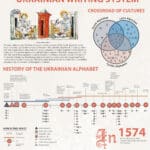National Remembrance in Ukraine
Since independence in 1991, Ukraine has made the Holodomor central to its national memory. Each year, on the fourth Saturday of November, Ukrainians observe Holodomor Remembrance Day. The commemoration typically includes:
- A moment of silence at 4:00 p.m.
- Candles placed in windows across the country, symbolizing lives extinguished by hunger.
- Ceremonies at local memorials, schools, and churches.
The National Museum of the Holodomor-Genocide in Kyiv, opened in 2008, serves as the focal point for remembrance. Its exhibits display archival documents, photographs, survivor testimonies, and artifacts from famine years, educating visitors while honoring victims.
Memorials Across the Globe
The Ukrainian diaspora has been instrumental in spreading awareness and ensuring commemoration beyond Ukraine’s borders. Major memorials include:
- Holodomor Memorial in Washington, D.C. (2015): Located near the U.S. Capitol, it symbolizes recognition by the American people.
- Toronto’s Holodomor Memorial (2018): Commissioned by Canada’s Ukrainian community, it reflects Canada’s role as one of the first countries to recognize the Holodomor as genocide.
- Memorials in Argentina, Australia, Poland, and the Baltic states: Each reflects the global spread of Ukrainian communities and their role in preserving memory.
In many diaspora centers, annual marches, lectures, and church services reaffirm collective memory and transmit it to younger generations.
Education and Awareness
Holodomor education is now part of Ukraine’s national school curriculum. Students learn about the famine not only as a historical event but also as a lesson in resilience and the dangers of authoritarianism.
Globally, academic courses in genocide studies increasingly include the Holodomor alongside the Holocaust, Armenian Genocide, and Rwandan Genocide. Universities in Canada, the U.S., and Europe have integrated Holodomor scholarship into history and human rights programs.
The Holodomor in Arts and Literature
Artists, writers, and filmmakers have played a vital role in shaping remembrance.
- Literature: Works like Vasyl Barka’s The Yellow Prince (1963) vividly portray famine life through fiction rooted in lived experience.
- Film: Documentaries such as Harvest of Despair (1984) and Bitter Harvest (2017) have brought the Holodomor to wider audiences.
- Visual Arts: Paintings, sculptures, and photo exhibits continue to highlight the suffering and resilience of Ukrainians.
Through cultural expression, the Holodomor transcends textbooks, engaging audiences emotionally as well as intellectually.
Memory, Identity, and Contemporary Relevance
For Ukrainians, the Holodomor is more than a tragedy of the past. It is a symbol of national resilience and a reminder of the costs of subjugation. The famine’s deliberate targeting of Ukrainian peasants and culture reinforced a sense of identity forged in struggle.
This memory resonates powerfully today, especially as Ukraine faces renewed aggression from Russia. Many Ukrainians view contemporary conflicts as part of the same historical pattern of attempts to suppress Ukrainian sovereignty.
Remembering the Holodomor is not only about mourning the millions who died, but also about affirming the right of the Ukrainian nation to exist freely and independently.

